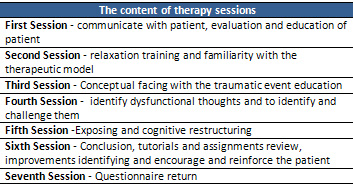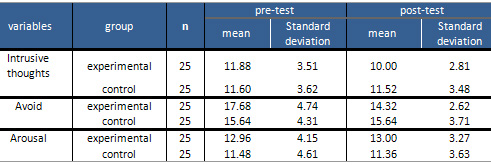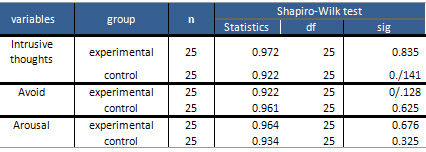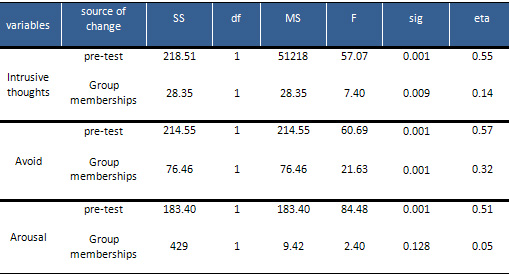|
|
 |
| ............................................................. |
|
|
| ........................................................ |
| From
the Editor |

|
Editorial
A. Abyad (Chief Editor) |
........................................................
|
|
Original contribution/Clinical Investigation
Diabetes Mellitus
- Knowledge, Management and Complications: Survey
report from Faisalabad-Pakistan
Ijaz Anwer, Ahmad Shahzad, Kashmira Nanji, Farah
Haider, Muhammad Masood Ahmad
Alanine aminotransferase
indicates excess weight and dyslipidemia
Mehmet Rami Helvaci, Orhan Ayyildiz* Mustafa
Cem Algin, Yusuf Aydin, Abdulrazak Abyad, Lesley
Pocock
Comparative Analysis of Antimicrobial Peptides
Gene Expression in Susceptible/Resistant Mice
Macrophages to Leishmania major Infection
Hamid Daneshvar, Iraj Sharifi, Alireza Kyhani,
Amir Tavakoli Kareshk, Arash Asadi
Does
socio-economic status of the patients have effect
on clinical outcomes after coronary artery bypass
grafting surgery?
Forough Razmjooei, Afshin Mansourian, Saeed
Kouhpyma
Comparison of the uterine
artery Doppler indices during pregnancy between
gestational diabetes and diabetes mellitus and
healthy pregnant women
Nazanin Farshchian, Farhad Naleini, Amir Masoud
Jaafarnejhad,
Parisa Bahrami Kamangar
Survey single dose
Gentamicin in treatment of UTI in children with
range of 1 month to 13 years old in Jahrom during
2015
Ehsan Rahmanian, Farideh Mogharab,
Vahid Mogharab
Evaluation of control of
bleeding by electro cauterization of bleeding
points of amplatz sheath tract after percutaneous
nephrolithotomy (PCNL) in Jahrom Peymanieh hospital
during year 2015-2016
Ali Reza Yousefi , Reza Inaloo
Comparison of the three-finger
tracheal palpation technique with triple ID
formula to determine endotracheal tube depth
in children 2-8 years in 2016-2017
Anahid Maleki, Alireza Ebrahim Soltani, Alireza
Takzare, Ebrahim Espahbodi,
Mehrdad Goodarzi , Roya Noori
Effect of Sevoflurane
and Propofol on pulmonary arterial pressure
during cardiac catheterization in children with
congenital heart diseases
Faranak Behnaz, Mahshid Ghasemi , Gholamreza
Mohseni, Azim Zaraki
Population and Community Studies
Prevalence
and risk factors of obesity in children aged
2-12 years in the Abu Dhabi Islands
Eideh Al-Shehhi, Hessa Al-Dhefairi, Kholoud
Abuasi, Noora Al Ali, Mona Al Tunaiji, Ebtihal
Darwish
Study and comparison
of psychological disorders in normal students
and students with multiple sclerosis in Shahrekord
Neda Ardestani-Samani, Mohammad Rabiei, Mohammad
Ghasemi-Pirbalooti, Asghar Bayati, Saeid Heidari-Soureshjani
Comparative
study of self-concept, physical self-concept,
and time perspective between the students with
multiple sclerosis and healthy students in Shahrekord
Neda Ardestani-Samani, Mohammad Rabiei, Mohammad
Ghasemi-Pirbalooti, Asghar Bayati, Saeid Heidari-Soureshjani
Relationship
between Coping Styles and Religious Orientation
with Mental Health in the Students of the Nursing-Midwifery
Faculty of Zabol
Nasim Dastras, Mohsen Heidari Mokarrar, Majid
Dastras, Shirzad Arianmehr
Tuberculosis in Abadan,
Iran (2012-2016): An Epidemiological Study
Ali-Asghar ValiPour, Azimeh Karimyan, Mahmood
Banarimehr, Marzieh Ghassemi, Maryam Robeyhavi,
Rahil Hojjati,
Parvin Gholizadeh
Family Stability and Conflict
of Spiritual Beliefs and Superstitions among
Yazdi People in Iran: A Qualitative Study
Zahra Pourmovahed , Seyed Saied Mazloomy Mahmoodabad
; Hassan Zareei Mahmoodabadi ; Hossein Tavangar
; Seyed Mojtaba Yassini Ardekani ; Ali Akbar
Vaezi
A comparative
study of the self-actualization in psychology
and Islam
Simin Afrasibi, Zakieh Fattahi
The effectiveness
of cognitive - behavioral therapy in reducing
the post-traumatic stress symptoms in male students
survivors of earthquake in the central district
of Varzeghan
Sakineh Salamat, Dr.Ahad Ahangar, Robab Farajzadeh
Reviews
Effects and mechanisms
of medicinal plants on stress hormone (cortisol):
A systematic review
Kamal Solati, Saeid Heidari-Soureshjani, Lesley
Pocock
Comparing Traditional
and medical treatments for constipation : A
Review Article
Mohammad Yaqub Rajput
A review of anti-measles
and anti-rubella antibodies in 15- 25 year old
women in Jahrom City in 2011
Ehsan Rahmania , Farideh Mogharab, Vahid Mogharab
Review of percutaneous
nephrolithotomy in children below 12 years old
in Jahrom hospital, during 2010-2014
Ali Reza Yousefi , Reza Inaloo
Physical and
mental health in Islam
Bahador Mehraki, Abdollah Gholami
International Health Affairs
The Challenges of Implementation
of Professional Ethics Standards in Clinical Care
from the viewpoint of Nursing Students and Nurses
Saeedeh Elhami, Kambiz Saberi, Maryam Ban, Sajedeh
Mousaviasl, Nasim Hatefi Moadab, Marzieh Ghassemi
Cognitive Determinants
of Physical Activity Intention among Iranian Nurses:
An Application of Integrative Model of Behavior
Prediction
Arsalan Ghaderi, Firoozeh Mostafavi, Behzad Mahaki,
Abdorrahim Afkhamzadeh,
Yadolah Zarezadeh , Erfan Sadeghi
Effect of resilience-based
intervention on occupational stress among nurses
Hossein Jafarizadeh, Ebrahim Zhiyani, Nader
Aghakhani, Vahid Alinejad, Yaser Moradi
Education and Training
Calculation of Salaries
and Benefits of Faculty Members in the Ministry
of Health and Medical Education of Iran
Abdolreza Gilavand
The effect of education
on self-care behaviors of gastrointestinal side
effects on patients undergoing chemotherapy
Shokoh Varaei, Ehsan Abadi Pishe, Shadan Pedram
Razie, Lila Nezam Abadi Farahani
Creating and
Validating the Faith Inventory for Students
at Islamic Azad University of Ahvaz
Solmaz Choheili, Reza Pasha, Gholam Hossein
Maktabi, Ehsan Moheb
Creating
and Validating the Adjustment Inventory for
the Students of Islamic Azad University of Ahvaz
Homa Choheili, Reza Pasha, Gholam Hossein Maktabi,
Ehsan Moheb
Evaluating
the Quality of Educational Services from the
Viewpoints of Radiology Students of Ahvaz Jundishapur
University of Medical Sciences
Abdolreza Gilavand, Jafar Fatahiasl
An Investigation
of Psychosocial aspect of Iranian Nursing Students'
Clinical Setting
Mahsa Boozaripour , Zanyar Karimi, Sima Zohari
Anbohi, Amir Almasi-Hashiani, Fariba Borhani
Clinical Research and Methods
Comparison of the
Antibacterial Effects of Chlorhexidine Mouth
washes with Jaftex Mouth wash on Some Common
Oral Microorganisms (An in Vitro Study)
Ebrahim Babadi, Zahra Bamzadeh, Fatemeh Babadi
Study of the effect
of plasma jet on Fusarium isolates with ability
to produce DON toxins
Elham Galin Abbasian, Mansour Bayat, Arash chaichi
Nosrati, Seyed Jamal Hashemi, Mahmood Ghoranneviss
The comparison of
anti-inflammatory effect in two methods of topical
dexamethasone injection and topical application
of ginger alcoholic extract after removing mandibular
wisdom teeth
Sahar Zandi, Seyyed Muhammadreza Alavi, Kamran
Mirzaie, Ramin Seyedian, Narges Aria, Saman
Jokar
The effect of curcumin
on growth and adherence of major microorganisms
causing tooth decay
Leila Helalat, Ahmad Zarejavid, Alireza Ekrami,
Mohammd Hosein Haghighizadeh, Mehdi Shiri Nasab
|
|
Chief
Editor -
Abdulrazak
Abyad
MD, MPH, MBA, AGSF, AFCHSE
.........................................................
Editorial
Office -
Abyad Medical Center & Middle East Longevity
Institute
Azmi Street, Abdo Center,
PO BOX 618
Tripoli, Lebanon
Phone: (961) 6-443684
Fax: (961) 6-443685
Email:
aabyad@cyberia.net.lb
.........................................................
Publisher
-
Lesley
Pocock
medi+WORLD International
11 Colston Avenue,
Sherbrooke 3789
AUSTRALIA
Phone: +61 (3) 9005 9847
Fax: +61 (3) 9012 5857
Email:
lesleypocock@mediworld.com.au
.........................................................
Editorial
Enquiries -
abyad@cyberia.net.lb
.........................................................
Advertising
Enquiries -
lesleypocock@mediworld.com.au
.........................................................
While all
efforts have been made to ensure the accuracy
of the information in this journal, opinions
expressed are those of the authors and do not
necessarily reflect the views of The Publishers,
Editor or the Editorial Board. The publishers,
Editor and Editorial Board cannot be held responsible
for errors or any consequences arising from
the use of information contained in this journal;
or the views and opinions expressed. Publication
of any advertisements does not constitute any
endorsement by the Publishers and Editors of
the product advertised.
The contents
of this journal are copyright. Apart from any
fair dealing for purposes of private study,
research, criticism or review, as permitted
under the Australian Copyright Act, no part
of this program may be reproduced without the
permission of the publisher.
|
|
|
| November 2017
- Volume 15, Issue 9 |
|
|
The effectiveness of
cognitive - behavioral therapy in reducing the
post-traumatic stress symptoms in male student
survivors of the earthquake in the central district
of Varzeghan
Sakineh Salamat (1)
Ahad Ahangar (2)
Robab Farajzadeh (3)
(1) Department of psychology, Payame Noor University,(PNU)PO
BOX 19395-3697, Tehran IRAN.
(2) Department of Counseling, Shabestar Branch,
Islamic Azad University, Shabestar, Iran
(3) Graduate of Consultation (M.A).
Corresponding author:
Dr.Ahad Ahangar
Department of Counseling,
Shabestar Branch,
Islamic Azad University,
Shabestar, Iran
|
Abstract
Background: The
aim of this study is investigating the
effectiveness of cognitive - behavioral
therapy in reducing the post-traumatic
stress symptoms in male student survivors
of the earthquake in the central district
of Varzeghan.
Methodology:
This study is a quasi-experimental
study with pretest – Posttest design
with control group. The population included
all Central district of Varzaghan city
high school II students in 2015-2016 who
were evaluated based on secondary trauma
stress scale (STSS) of Bride. Individuals
with the highest scores were selected
as the study subjects and divided into
two experimental and control groups (
n 1 = n 2=25) randomly. The experimental
group received 6 therapy sessions. The
derived data from the groups were analyzed.
Findings: The
results of covariance analysis showed
that there is a significant difference
between the experimental and control groups
in intrusive thoughts scores and there
was a significant difference in avoidance
(P <0.05), but in arousal scale there
was no significant difference (0.05>P).
Conclusion:
In general, it can be concluded that this
therapeutic intervention is effective
and it can be used at health centers as
well as schools in order to reduce the
symptoms of post-traumatic stress.
Key words: Posttraumatic
stress disorder, Cognitive - behavioral
therapy, Students.
|
In recent decades, the psychological effects
of earthquakes have been taken into consideration
more than before. Studies which have been addressed
to survey the natural disasters outcomes show
that many earthquake survivors after confronting
the stressful event (such as lack of interested
people, social structure chaos and social supports
loss), show certain clinical responses (Livanuo,
Bassoglu, Salcioglu, & Kalendar, 2003).
Studies have shown that severe earthquakes can
cause severe long-term disabilities. In studies
which were conducted on 430 people who were
Turkey’s 1999 earthquake survivors, disability
and mental disorders outbreaks such as post-traumatic
stress disorder had a direct correlation with
proximity and exposure to the earthquake (Kilic
& Ulusoy, 2001). In another study which
was conducted on 586 survivors of the earthquake
in Turkey results in that severe and terrible
earthquake lead to long-term psychological consequences,
especially in people who had high exposure levels
(Salcioglu, Basoglu & Livanou, 2003).
Typically, post-traumatic stress disorder is
the first response of survivors to trauma, which
is an important prediction of their subsequent
mental and physical health status long-term
outcome (March, Amaya-Jackson, Murray &
Schulte, 1998). A study in Taiwan showed that
7.21 percent of the 323 earthquake survivors
had PTSD symptoms, but in general, there are
numerous reports that vary from 5.2 to 33 percent
in adults and 28 to 70 percent in children (Hsu,
Chong, Yang & Yen, 2002). Therefore, in
order to reduce the disabilities, preventive
and therapeutic interventions, such as supporting
group psychotherapy and treatments based on
cognitive-behavioral methods as well as other
types of psychotherapy, have been paid attention
(Livanuo, Bassoglu, Salcioglu & Kalendar,
2003). Many clinical studies have shown that
cognitive behavioral programs are effective
in controlling the symptoms of PTSD (Foa, 2006).
In research performed by March et al (1998)
showed that cognitive behavioral therapy intervention
is effective in PTSD stress disorder.
Cognitive behavioral therapy is a way that
helps people think differently about bad memories
so that they will be less distressing and more
manageable. Usually this type of treatment also
involves several sessions of relaxation.
Wessely, Rose and Bisson (2002) also conducted
a study on 35 earthquake victims which suggested
the high effectiveness of cognitive-behavioral
treatments for PTSD and grief. In other research
Ehlers (2000) studied 28 people with PTSD and
reported that PTSD symptoms and anxiety in patients
who had undergone cognitive-behavioral therapy
was reduced compared to the control group. In
another study the group psychotherapy effect
using psychological recounting for 30 natural
events survivors was investigated 6 months after
the event, which indicated symptom reduction
in both intervention and control groups (Chemtob,
Tomas and Law, 1997).
Foa (2004) treated 117 PTSD affected victims
of traumatic events through flooding and a combination
of spate and cognitive restructuring treatment.
He concluded that both treatments reduced the
symptoms of PTSD and depression identically.
Regarding the effectiveness of cognitive behavioral
therapy in reducing symptoms of post-traumatic
stress in relation to disasters caused by war,
floods, storms, earthquakes and so on, this
paper seeks to determine whether cognitive behavioral
therapy is effective to alleviate the symptoms
of post-traumatic stress in earthquake survivor
male students in the central district of Varzaghan.
A quasi-experimental technique of pretest-posttest
type with control group was used, through which
a cluster of high school male students were
selected randomly and the secondary trauma stress
scale by Bride (STSS) was conducted on students.
Among the students who gained high scores in
each subscale in the Secondary Trauma Stress
Bride questionnaire 50 students were selected
randomly and 25 students were replaced in the
experimental group and 25 in the control group.
Secondary Trauma Stress Scale Bride (STSS)
of Bride
This scale was established by Bride and his
colleagues in 2003 and has 17 items summarized
in three subscales;
1. Nuisance
2. Avoid
3. Arousal
At this scale, using a five degrees Likert scale
from 1 (never) to 5 (always) the participants
were asked to identify to what extent each of
the items happened to themin the previous week.
High scores on each subscale indicate lack of
health and less score, simply a healthy student.
Bride et.al studies results showed that the
scale reliability is .93 which has an acceptable
convergent and divergent and structure validity.
In this study, the Cronbach’s alpha coefficient
for the disturbance, avoidance and arousal subscale
were estimated as 0.878, 0.798 and 0.847, respectively.
Treatment Plan

For
data
analysis,
in
addition
to
using
descriptive
statistics,
multivariate
analysis
of
covariance
(MANCOVA)
also
used.
Descriptive
Findings
Table
1.
The
mean
and
Standard
deviation
of
pre-test,
post-test
scores
of
research
variables
in
both
experimental
and
control
groups

Table
1
results
imply
the
improvement
of
variables
in
the
experimental
group
in
posttest
stage
compared
to
the
control
group,
but
no
difference
was
observed
in
the
control
group.
In
the
present
study,
the
covariance
analysis
was
used
for
inferential
results
analysis.
Therefore,
prior
to
study
the
hypotheses,
the
normality
of
scores
distribution
assumption
was
examined.
To
test
the
assumption
the
Shapiro-Wilk
test
was
used.
The
test
results
for
research
variables
pre-test
scores
are
given
in
Table
2.
Table
2:
Shapiro-Wilk
test
results
for
pre-assumption
scores
distribution
normality

As
can
be
seen
in
Table
2,
assuming
zero
for
the
scores
distribution
normality
of
two
groups
in
research
variables
is
confirmed,
is
that
the
scores
distribution
normality
pre-assumption
in
pre-test
and
in
both
control
and
test
tests
groups
were
confirmed.
Inferential
evaluation
of
data
Given
that
in
each
variable
the
post-test
scores
were
the
dependent
variables
and
in
order
to
control
the
effect
of
pre-test
(as
covariate
and
control
variable)
the
ANCOVA
was
used
on
grades.
Cognitive-behavioral
therapy
is
effective
in
reducing
the
symptoms
of
post-traumatic
stress
(intrusive
thoughts,
avoidance
and
arousal)
of
Varzaghan
earthquake-stricken
students.
Table
3:.The
results
of
cognitive-behavioral
therapy
covariance
analysis
on
intrusive
thoughts
-
pre-test
-
group
membership

As
the
Table
3
results
show,
after
removing
the
effect
of
pre-test
scores,
except
the
arousal
scale,
given
that
a
significant
level
obtained
for
both
variables
of
intrusive
thoughts
and
avoidance
are
less
than
Alpha
0.05,
so
the
research
hypothesis
was
confirmed.
Thus,
we
can
conclude
with
confidence
of
95/0
that
cognitive-behavioral
therapy
was
effective
in
participant’s
intrusive
thoughts
and
avoidance
reduction
but
it
had
no
significant
effect
on
the
participant’s
arousal
reduction.
Squared
Eta
was
estimated
as
0.14,
0.32
and
0.05
for
intrusive
thoughts,
avoidance
and
arousal,
respectively.
Namely
0.14,
0.32
and
0.5
of
intrusive
thoughts,
avoidance
and
arousal
variances
was
explained
by
the
cognitive-behavioral
therapy
independent
variable.
Disasters
have
been
an
integral
part
of
human
life.
Natural
disasters
cause
death
and
disability
to
millions
of
people
around
the
world
every
year
and
resulting
financial
damages.
As
various
studies
have
shown,
the
confrontation
with
a
damaging
event
can
lead
to
various
disorders,
and
PTSD
stress
and
anxiety
can
be
cited
as
the
most
important.
To
treat
the
post-PTSD
stress
disorder
symptoms
and
associated
disorders
according
to
different
perspectives
of
the
etiology
of
this
disorder,
various
therapies
has
been
suggested
which
include
cognitive
behavioral
therapy
method.
Thus,
given
that
several
researchers
have
confirmed
the
effectiveness
of
cognitive-behavioral
treatment
for
post-traumatic
stress
disorder,
the
aim
of
this
study
was
investigating
the
cognitive
behavioral
therapy
effectiveness
in
symptoms
of
post-traumatic
stress
disorder
reduction
,among
the
earthquake
survivor
male
students
of
the
central
district
of
Varzaghan.
The
results
showed
that
the
cognitive-behavioral
group
therapy
diminished
the
stress
of
earthquake
survivor
male
students
of
the
central
district
of
Varzaghan
PTSD
shown
in
the
posttest
scores
in
the
experimental
group
more
than
the
control
group.
The
results
obtained
in
this
study
are
in
good
accordance
with
those
of
Foa
(2004),
Salcioglu,
Basoglu
&
Livanou
(2003),
Wessely,
Rose
and
Bisson
(2002),
March
(1998),
Ehlers
(2000),
Chemtob
and
et
al
(1997)
.
In
explaining
how
the
cognitive
behavioral
therapy
effects
on
PTSD
symptoms
of
the
earthquake
survivor
male
students
of
the
central
district
of
Varzaghan
it
can
be
due
to
the
effective
factors
on
PTSD
symptoms
continuation
in
and
given
the
cognitive-behavioral
therapy
techniques
by
using
relaxation,
conceptual
facing
with
the
traumatic
event
education,
identifying
dysfunctional
thoughts
and
challenging
them
and
exposing
and
cognitive
restructuring
could
reduce
the
effects
of
PTSD
in
the
control
group.
Given
that
the
present
study
was
performed
on
the
earthquake
survivor
male
students
of
the
central
district
of
Varzaghan
and
sampling
was
available
and
purposeful,
we
cannot
generalize
its
results
to
other
students’
disorders
of
other
age
groups
and
this
generalization
should
be
done
with
caution.
Another
limitation
of
the
study
was
the
lack
of
six-months’
follow-up.
It
is
recommended
to
conduct
studies
to
assess
the
students’
family
situation
and
their
well-being
regarding
the
extent
of
this
problem
in
Iran
as
well
as
conducting
research
about
adjustment
to
the
adverse
effects
of
close
relatives
loss
in
various
ages.
Regarding
the
effectiveness
of
cognitive
-
behavioral
therapy
in
reducing
the
bereaved
students
PTSD
symptoms
it
is
suggested
to
use
these
services
in
other
organizations
and
schools.
Establishing
organizations
and
centers
in
order
to
support
and
train
to
prevent
post-traumatic
stress
symptoms
and
use
of
experts,
in
agencies,
governmental
and
non-governmental
organizations
for
reducing
psychological
problems
in
children
and
adolescents
who
are
affected
by
injuries,
and
educating
their
families
and
adolescents
and
providing
appropriate
support
to
their
school
officials
are
among
other
proposals.
Bride,
B.E.,
Robinson,
M.M,
&
Figley,
C.R.
(2004).
Development
and
validation
of
the
Secondary
Traumatic
Stress
Scale.
Research
on
Social
Work
Practice,
14,
pp
27-35.
Google
Scholar
Chemtob
CM,
Tomas
S,
Law
W.
(1997).
Postdisaster
psychosocial
interventions:
a
field
study
of
the
impact
of
debriefing
on
psychological
distress.
The
American
Journal
of
Psychiatry;
154(3):
pp
415-7.
Ehlers
A,
Clark
DM.
(2000).
A
cognitive
model
of
posttraumatic
stress
disorder.
Journal
Behaviour
Research
and
Therapy;
38(4):
pp
319–
345.
Foa,
E.B.
(2004).
Treating
Psychological
Trauma
and
PTSD,
(Edited
by),
John,
P.
Wilson,
Mathew,
J,
Frieman,
Jacob,
D
,
Lindy,
Guilford
Press,
PP,
159-178
,
Chapter
7.
Foa,
EB.
(2006).
Psychosocial
therapy
for
posttraumatic
stress
disorder.
Journal
of
Clinical
Psychiatry;
67(2):
pp
40–45.
Hsu,
C.
C.,
Chong,
M.
Y.,
Yang,
P.,
&
Yen,
C.
F.
(2002).
Posttraumatic
stress
disorder
among
adolescent
earthquake
victims
in
Taiwan.
Journal
of
American
Academy
for
child
and
Adolescence
Psychiatry;
41(7):
pp
875-881.
Livanuo,
M.,
Bassoglu,
M.,
Salcioglu,
E.
B.,
&
Kalendar,
D.B.
(2003).
Traumatic
stress
responses
in
treatment
seeking
earthquake
survivors
n
Turkey.
The
Journal
of
Nervous
and
Mental
Disease
Inc,
190(12):
pp
816-823.
March,
J.
S.,
Amaya-Jackson,
L.,
Murray,
M.
C.,
Schulte,
A.
(1998).
Cognitive
behavioral
psychotherapy
for
children
and
adolescent
with
posttraumatic
stress
disorder
after
a
single
incident
stressor.
Journal
of
American
Academy
for
child
and
Adolescence
Psychiatry;
37(6):
pp
585-593.
Kilic,
C.,
&
Ulusoy,
M.
(2001).
Treatment
strategies
for
posttraumatic
stress
disorder:
need
for
brief
and
effective
interventions.
Acta
psychiatrica
scandinavica,
104(6):
pp
409-410.
Wessely
S,
Rose
S,
Bisson
J.
(2002).
A
systematic
review
of
brief
psychological
interventions
(‘debriefing’)
for
the
immediate
trauma
related
symptoms
and
prevention
of
post-traumatic
stress
disorder.
Cochrane
Library,
4,
4.
Google
Scholar.
Salcioglu,
E.,
Basoglu,
M.,
&
Livanou,
M.
(2003).
Long-term
psychological
outcome
for
non–treatment
seeking
earthquake
survivors
in
Turkey.
The
Journal
of
Nervous
and
Mental
Disease,
191(3):
pp
154-160.
|
|
.................................................................................................................

|
| |
|

